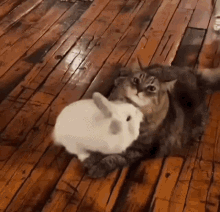You have an idea. Maybe it's just a scene, maybe it's a whole plot, but it's demanding to be written. The hard part?
Turning it into a good story. Because good writing isn't about a series of events, it's about making the reader care about your the story, it's plot, and most importantly the characters.
So let's break it down. The real stuff that makes the story works.
Let us slide into your dms 🥰
Get notified of top trending articles like this one every week! (we won't spam you)A Premise That Has Teeth
A good premise has to be interesting. It has to have stakes and make the reader care about it.

Image Credit: Nick Morrison on Unsplash
Weak Premise: A girl discovers she has magical powers.
Okay... and?
Stronger Premise: A girl discovers she has magical powers, but magic is illegal and using it means execution.
Now there are stakes. Now there are tensions. Now the readers are interested.
Before you start writing, you have to ask yourself:
- What happens if the protagonist fails?
- Why does the story matter?
- What makes it different from every other story in the genre?
If your premise doesn't get you excited, then re-do it. If you already know how the story is going to end, when you've just started writing it, then you're doing something wrong. It's fine to have familiarity.
But it's not fine to be predictable. The reader shouldn't know exactly how it's going to end when they just start reading it.

Take the Quiz: What Group Activity Should You Try?
Looking for a way to make new friends? Try this quiz and find the perfect activity for you!
Real Characters
Forget strong characters. Forget likable characters. You want characters that feal real.
They shoud be flawed, messy, and complicated. If they fit perfectly into a cliche, then you might want to change them a bit. Readers don't even have to necessarily understand your characters, but they have to feel them.
A good character isn’t just a set of traits—they’re a person shaped by their past, their fears, and their desires.
- What’s the one thing they don’t want to admit about themselves?
- What’s something they want that they know they shouldn’t?
- What’s the worst thing that could happen to them—and what would they do if it did?
Make them struggle. Don’t give them an easy way out. The best characters are the ones who fight for what they want, even against themselves.
Dialogue: Every Character Needs Their Own Voice
Dialogue isn’t just about making characters talk—it’s about making them talk like themselves. If every character sounds the same, your story will feel flat.

Image Credit: Patrick Fore on Unsplash
Bad Dialogue (Everyone Sounds the Same)
“I am sorry about what happened,” she said. “It was unfortunate.”
“Yes, I agree. It was very unfortunate.”
Better Dialogue (Different Voices, Personality)
“Look, I didn’t mean for it to happen, okay?” she muttered, arms crossed.
“Didn’t mean for it?” He scoffed. “That’s the best you’ve got?”
Some people talk in long, careful sentences. Others are blunt. Some use humor to deflect, while others are direct to the point of being rude. Play with that.
Making Dialogue Realistic
Unrealistic:
“I am feeling quite tired today. Perhaps we should rest before we continue.”
Realistic:
“Ugh, I’m so tired. Can we sit for like, five minutes?”
People rarely speak in perfect grammar. They use contractions, filler words, and shortcuts. They're dramatic.
They interrupt each other. They trail off mid-thought.

Image Credit: Aaron Burden on Unsplash
Diction and Dialects: How Speech Patterns Change
A character’s background influences how they speak. Consider a few things.
Regional Dialects: A character from New York might say, “Lemme grab a coffee,” while someone from the South might say, “I’m fixin’ to get some coffee.”
Formal vs. Informal: A professor might say, “That’s an interesting theory,” while a teenager might say, “Oh, that’s cool.”
Short vs. Long-Winded: A no-nonsense soldier might say, “Move.” A poet might say, “We should proceed with caution.”
If you can hides the names of characters in a scene and still tell who’s speaking, you’re doing it right.
Show, Don’t Just Tell (But Also, Sometimes Tell)
You’ve heard it a million times: “Show, don’t tell.” But here’s the truth—sometimes telling is fine. The trick is knowing when to use each.
Telling (Weak) She was nervous.
Showing (Stronger) Her fingers drummed against the table, too fast, too loud. She swallowed hard, but her throat stayed dry.
Image Credit: hannah grace on Unsplash
When to Show:
When you want the reader to feel something deeply.
When the moment is important to the character.
When atmosphere and emotion matter.
When to Tell:
When the information isn’t emotional or important (e.g., “They drove for hours.”).
When you need to move things along without dragging them out.
It’s about balance. Show the important stuff, but don’t spend three paragraphs describing how someone opens a door. It's the 21st century.
Conclusion
A good story isn’t just about what happens—it’s about why it matters. Give your characters depth, your dialogue personality, and your stakes real weight. If the reader feels something, you’ve done your job.















